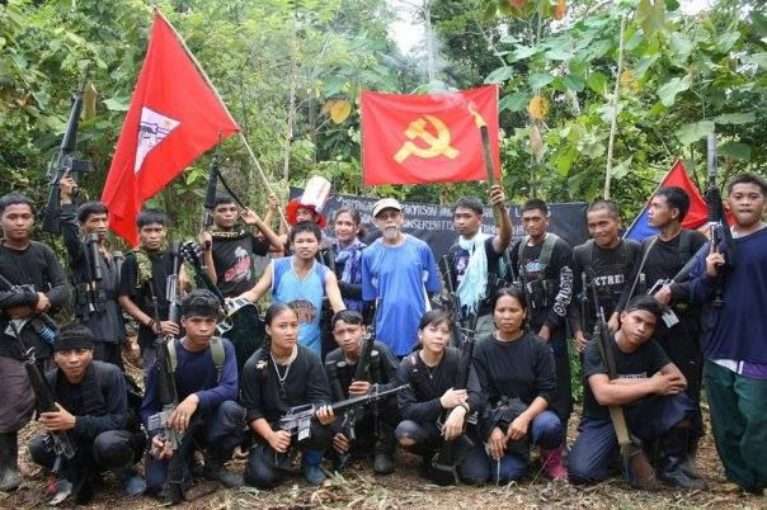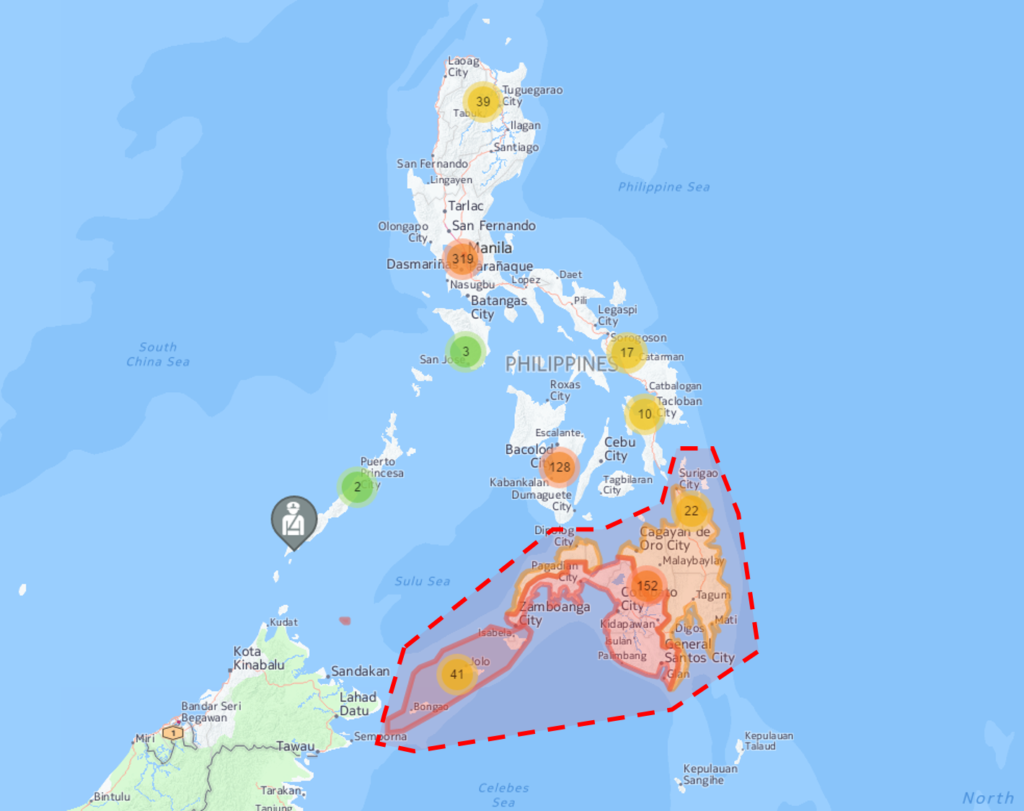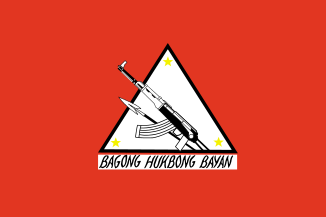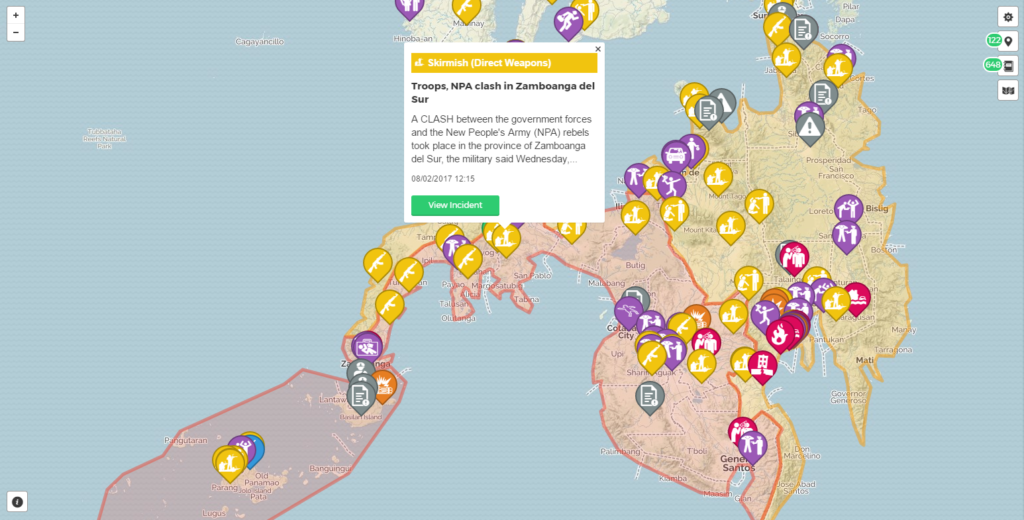The Renewal of Violence Between the New People’s Army and the Government of the Philippines: Peace Through Bullets

In an already tense security environment on the island of Mindanao in the southern Philippines, the renewal of armed conflict between the armed wing of the communist rebels, the New Peopleâs Army (NPA), and the armed forces of the Philippines (AFP) has brought more death and instability to the region. While the country had enjoyed a six-month ceasefire with the NPA, and had been able to focus military efforts against other groups such as Abu Sayyaf, the Maute Group, and the Bangsamoro Islamic Freedom Fighters, the renewed violence has once again placed the AFP in battle on multiple fronts, as well as putting civilians in danger of being in the crossfire.

Who are the NPA?
The New Peopleâs Army (NPA) is the armed wing of the Communist Party of the Philippines, who also has control over the National Democratic Front- Philippines (NDFP). For this reason, many people interchange the three acronyms, or use all three at the same time as CPP-NDFP-NPA when referring to communist rebel politics or armed acts. Regarding the NPA, the funding for the movement comes through extracting taxes from businesses, especially foreign owned, in their areas of control, and have been embattled with the Government for nearly half a century, making it the longest running communist insurgency. The Communist Party of the Philippines and the New Peopleâs Army were designated as a terrorist organization by the United States in 2002, although the government of the Philippines delisted the organization in 2011 to resume peace talks with them. The NDFP has been a liaison between revolutionary groups and the government. Theyâve been negotiating peace with the government since 1992 to address the roots of the armed conflict.

A Breakdown in Talks
During the third round of negotiations in Rome in late January between the government and the National Democratic Front- Philippines, the NDFP became wary of the governmentâs unfulfilled promises, particularly the release of 400 political prisoners. Hopes for fruitful discussion and resolutions were dim even prior to the start of the talks. Additionally, the NPA saw the deployment of AFP troops in rural areas as an antagonizing move, on the part of the Government. On February 1st, the lack of fulfillment of the promises made by the government led the NDFP to withdraw from the unilateral ceasefire which had been in place since August, allowing the NPA to determine themselves whether to keep the ceasefire in place or renew hostilities. The talks ended with no agreement on a permanent ceasefire which left the door open for an increase in violence, something that resumed with immediate effect.

On February 3rd, President Rodrigo Duterte declared that he was pulling out the government from the peace talks completely, and terminated the governmentâs ceasefire with the rebels.
A day after announcing the termination to the peace talks with the CPP-NDFP-NPA, President Duterte said that he now considered them a terrorist group. The announcement was made at the same time as the president was attending the wake of three government soldiers slain by the NPA. His defense secretary, Delfin Lorenzana has supported the president in the claim that the group are terrorists. On Monday February 6th, President Duterte reiterated the removal of immunity that had been extended to the consultants of the NDFP. The immunity was given in good faith for consultants to negotiate the peace deal, but since scrapping the ceasefire and the talks, the president has said that if the consultants come back to the Philippines, they will be arrested and imprisoned. Since the breakdown of talks and the antagonistic rhetoric of both groups, violent clashes have been reported in much of the country, particularly on the southern island of Mindanao.
Significant Acts of Violence
The acts of violence between the NPA and the AFP have been varied in method and size of the event. Reports of skirmishes between both groups have shown that more soldiers have been killed than NPA rebels, but this is biased, as the armyâs deaths are reported, but not the NPAâs, unless the bodies were left behind by their fellow rebels. One of the earliest events of violence, occurred while the peace talks were being held in Rome, and was a skirmish on January 21st in North Cotabato that led to the deaths of 8 AFP soldiers and 1 rebel. Since the ceasefire was officially broken in early February, there have been many skirmishes between rebels and the AFP, but none as significant for the AFP as when they overran a rebel encampment in Asipulo town in Ifagao on February 12th, or when they overran an NPA camp in Davao Del Sur on February 25th. These camps were overrun after hour-long firefights, and led to the seizure of rifles, ammunitions, improvised explosive devices and components, as well as personal belonging left behind in the chaos.
In a few incidents between the two warring groups, AFP soldiers were abducted or taken as prisoners of war. The NPA currently holds 6 government soldiers hostage, but a statement from the NDFP had said that they would be released soon to make the peace talks proceed. This has yet to be done. These soldiers were not all taken during combat between the two groups, but also abducted while conducting community projects and relief efforts. On January 29th, a soldier was abducted in Surigao del Norte while he was leading a group of youth volunteers on a forest clean-up. Soldiers have not been the only ones taken as hostages by the NPA. On February 5th, 4 civilians, including a Barangay chairman, were abducted in the Compostela Valley, in the eastern part of Mindanao. For a group like the NPA, the use of kidnapping is mostly for leverage in negotiations, and to offer the opportunity of prisoner swaps. Unlike groups like Abu Sayyaf, the NPA does not tend to ransom the hostages they take.
Finally, other acts that the NPA has undertaken since the renewal of violence, have been acts of arson. Reported events include the hijacking of a Philip Morris Fortune Tobacco Corporation truck on January 21st, which was later found torched in Ilocos Sur. The event is representative of the NPAâs disdain for foreign multi-national corporations. Additionally, a month later, the NPA attempted to burn construction equipment in Catanauan town, Quezon province, but failed after soldiers stationed nearby and firefighters arrived, forcing the rebels to retreat. Regardless of the variety in acts, the CPP, on February 8th, announced that they were not afraid of Duterteâs âall-out warâ against them, as they had faced similar military offensives before and had weathered all of them.
Hopes for a Resumption in Peace
NPA movements and clashes with government forces in Mindanao have led to the displacement of some populations from their villages in Quirino province, Ifugao province, and other areas, which has led to some local mayors and governors to act. Since the renewal of armed attacks between the NPA and government forces in the region, multiple mayors from towns in the region and representatives have called on both parties to come back to the negotiating table to work on peace. Davao City Mayor Sara Duterte, daughter of President Rodrigo Duterte, offered to talk and listen to the NPA to put an end to the hostilities. This olive branch was extended to the NPA after a land mine attack and skirmish occurred north of the city causing the death of two soldiers and two rebels and injuring another 17 government troops. In addition to the Davao City Mayor, the Representative from Ifugao, Teddy Baguilat has pushed for the renewal of peace talks between both parties. Like Davao City, the push for talks was made after government forces overran NPA camps in the villages of Asipulo and Namal in Ifugao province. While other lawmakers have also appealed for a return to the negotiating table, there are also those who support President Duterte in backing away from the talks and renewing operations against the NPA.
On February 20th, President Duterte met with three leftist cabinet members to discuss the situation regarding the breakdown of talks with the NDFP. On the same day, the government said that they would resume peace talks with the NDFP if the armed wing of the group, the NPA, would stop their attacks on government soldiers, stop their extortion activities of the villages in their area of operations, and stop the burning of properties. To show a sign of good faith, the government asked the day before that the NPA release the soldiers and policemen kidnapped during the recent skirmishes. Three days later, the NDFP announced that the 6 government soldiers, held captive by the NPA, would be released soon, but as mentioned before, it has yet to come to fruition.
There is still hope for a long-lasting peace between the two parties. In August, when the peace talks resumed there was optimism, and the unilateral ceasefire ensured 5 months of lasting peace, which had been the longest ceasefire in the history of the conflict. The army remains skeptical that the two parties will be able to come back to the negotiating table to discuss peace, and have warned those local mayors interested in talking peace with the NPA on a more local level, to ensure that they are talking to the right factions of the NPA. A case-by-case and more local approach to peace with the NPA could very well be the way to ensure a reduction in acts of violence, but only time will tell whether it can be successful. At the time of this writing and publication, the NPA and the Government of the Philippines have yet to resume meaningful talks, the government soldiers held by the NPA have yet to be released, and skirmishes continue to be reported in multiple parts of the country causing disturbances in civiliansâ everyday life.
